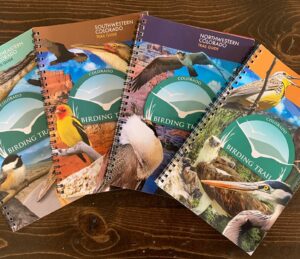Brandt Ryder – Chief Conservation Scientist
Brandt earned a Bachelors of Wildlife Biology from Unity College in (1999) and then went on to get a Ph.D. from the University of Missouri-St. Louis in (2008). Brandt’s dissertation focused on the demography and social behavior of tropical lekking birds. Prior to joining Bird Conservancy, Brandt worked for a decade as a research scientist for the Smithsonian Migratory Bird Center focusing on the conservation and behavior of birds across their annual cycle. Brandt has published over 50 peer-reviewed papers on a diversity of topics including urban ecology, migration ecology, landscape ecology and behavioral ecology. Brandt enjoys the outdoors in his free time through hiking, running, and doing landscape and astrophotography.
Matt Webb – Avian Ecologist
Matt was born and raised in Salida, CO. Around age 10, at odds with his preferences, his family moved to the ‘dull’ plains of Northern Colorado. To Matt’s surprise, he fell in love with the endless roll and incredible diversity of the shortgrass prairies. He later spent some time in Pittsburgh, PA, working at the Carnegie Museum of Natural History, the American Bird Conservancy, and the Smithsonian Migratory Bird Center. He holds a Bachelor’s Degree in Wildlife Biology and a Master’s in Conservation Leadership, both received from Colorado State University. When not building automated radio telemetry stations, Matt enjoys mothing, photographing beetles, riding and fixing bicycles, turning over stones, and dragging his family outside at night to watch the International Space Station go by.
Joe Pettit – Development Director
Joe is a development professional with experience spanning performing arts, conservation, climate change, foreign policy, political campaigns and urban horticulture. He grew up in eastern Nebraska and earned a Bachelor of Arts Degree in English from the University of Nebraska-Omaha. When not working, he can be found gardening, cycling, cooking, and, of course, birding.
Tyler Cash – Digital Engagement Manager/Educator
Tyler grew up in sunny southern California where he spent most of his time outside and in the ocean. He graduated from the University of California Santa Cruz with a Bachelor’s degree in Environmental Studies, where he gained extensive knowledge in natural history. After college Tyler worked at several different Outdoor Education facilities where he held several different roles ranging from Teaching Naturalist to Education Coordinator to Camp Manager. Tyler is excited to share his knowledge and love of birds and the outdoors with the Bird Conservancy community. In his free time you can find him hiking, climbing, traveling & exploring the mountains with his wife and two Australian Shepherds Pinyon and Manuka.
Taylor Dziedzina – Development/Executive Assistant
Taylor has a Bachelor’s Degree in Fish, Wildlife, and Conservation Biology from Colorado State University. After college, she worked at Colorado Parks and Wildlife as the Statewide Volunteer Program Assistant. For the past three years Taylor has been a field biologist leading surveys in the Intermountain West for threatened and endangered species. In her spare time Taylor can be found hiking and backpacking with her dog, Delilah, birdwatching, or curled up with a good book.



